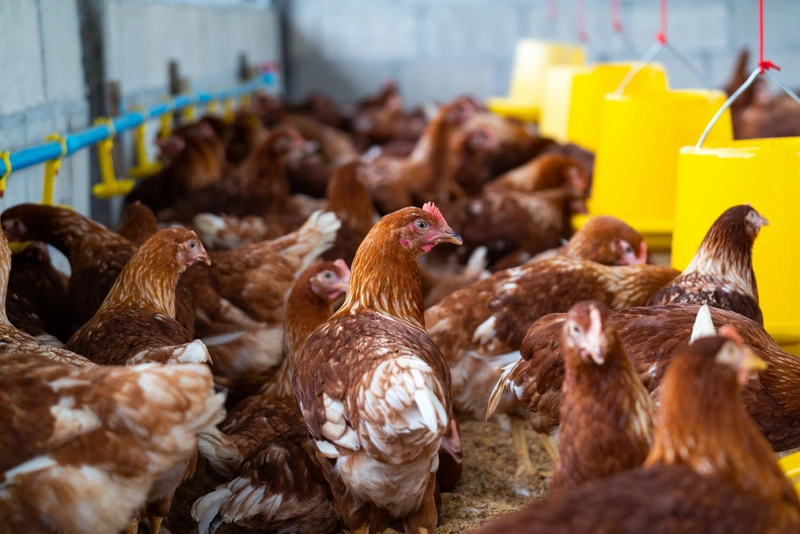Read Blog 
H5N1 Bird Flu: Symptoms, Causes, and Treatment India
Bird flu, also known as Avian Influenza, is a viral infection that spreads mainly among birds. One of the most dangerous types is H5N1, which can also infect humans and cause serious illness. In recent months, India has seen a rise in H5N1 bird flu outbreaks across several states, raising concern among health officials and the general public. This blog will help you understand what H5N1 bird flu is, how it spreads, the symptoms to watch out for, treatment options, and how to stay safe.
What is H5N1 Bird Flu?
H5N1 is a type of highly pathogenic avian influenza (HPAI) virus. It mainly affects domestic and wild birds but can occasionally infect humans and other animals like cats, tigers, and even pigs. The virus was first discovered in 1997 in Hong Kong and has since caused outbreaks around the world, including India.
The term "H5N1" refers to the two proteins on the virus surface: Hemagglutinin (H5) and Neuraminidase (N1). These determine how the virus infects cells and spreads.
H5N1 Bird Flu in India: The Current Situation
India has reported multiple outbreaks of H5N1 in 2025:
-
In Andhra Pradesh, eight outbreaks were confirmed, and over 600,000 birds were either killed by the virus or culled to prevent further spread.
-
A 2-year-old girl from Andhra Pradesh tragically died from H5N1, marking a rare and serious human case.
-
Gorakhpur in Uttar Pradesh has also been affected. Authorities have shut down poultry shops and started culling operations.
-
Other states like Maharashtra, Karnataka, Telangana, and Bihar have reported cases in poultry and wild birds.
These outbreaks highlight the urgent need for public awareness and preventive measures.
How Does H5N1 Spread?
H5N1 bird flu spreads mainly from infected birds to other birds and sometimes to humans.
Among Birds:
-
Direct contact with infected birds (alive or dead)
-
Contact with droppings, saliva, or feathers
-
Contaminated feed, water, cages, or tools
From Birds to Humans:
-
Close contact with infected poultry (handling, cleaning cages)
-
Eating undercooked or raw poultry products
-
Visiting live bird markets
-
Inhaling dust from contaminated bird droppings
It’s important to note that H5N1 does not spread easily from person to person. However, if the virus mutates, it could potentially lead to human-to-human transmission.
Symptoms of H5N1 Bird Flu in Humans
Symptoms of H5N1 infection in humans can appear within 2 to 8 days after exposure. These include:
In more serious cases, the infection can lead to:
-
Pneumonia
-
Multi-organ failure
-
Sepsis
-
Death
Immediate medical attention is critical if you suspect H5N1 infection.
How is H5N1 Diagnosed?
If a person shows flu-like symptoms and has been exposed to infected birds, doctors may recommend the following tests:
-
Throat or nasal swab for virus detection
-
Chest X-ray to check for pneumonia
-
Blood tests to monitor organ function
Samples are sent to specialized laboratories for confirmation. The National Institute of Virology (NIV) in Pune is one such testing center in India.
Treatment for H5N1 Bird Flu
There is no specific cure for H5N1, but early treatment can reduce complications. Doctors often use antiviral drugs like:
-
Oseltamivir (Tamiflu)
-
Zanamivir (Relenza)
These medicines work best when taken within 48 hours of symptom onset.
Supportive Care Includes:
Hospitalization is usually necessary, especially in severe cases.
How to Prevent H5N1 Bird Flu
Personal Precautions:
-
Wash your hands regularly with soap.
-
Wear masks and gloves while handling birds or cleaning bird cages.
-
Avoid touching dead birds.
-
Cook poultry and eggs thoroughly (internal temperature should reach 70°C).
Avoid:
-
Visiting live bird markets
-
Consuming raw or half-cooked eggs
-
Buying poultry from unlicensed vendors
For Poultry Farmers:
-
Separate sick birds immediately.
-
Disinfect poultry areas regularly.
-
Report unusual bird deaths to local veterinary authorities.
-
Don’t allow wild birds near poultry areas.
Vaccination:
While poultry vaccines exist, there’s currently no approved vaccine for humans against H5N1. However, scientists are working on new vaccines due to the rising global threat.
Government Steps in India
The Indian government, through the Department of Animal Husbandry & Dairying and Ministry of Health, is actively:
-
Monitoring bird flu outbreaks
-
Running awareness campaigns
-
Banning transport of poultry in affected areas
-
Setting up containment zones
-
Coordinating with WHO and international health bodies
States like Andhra Pradesh and Uttar Pradesh have already taken swift action, including culling and disinfection drives.
When to See a Doctor
You should see a doctor immediately if:
-
You develop flu-like symptoms after visiting a poultry farm or market
-
You have handled sick or dead birds recentl
-
Your symptoms worsen quickly (breathing issues, chest pain)
Early diagnosis and treatment can be life-saving.
Conclusion
The H5N1 bird flu is a serious health concern, especially with the recent rise in cases across India. While the risk of human infection remains low, it’s important to stay informed and cautious. If you handle birds or poultry, take proper safety measures and follow local health advisories.
The key to preventing an outbreak lies in awareness, early detection, and strict hygiene practices. Stay updated on the latest news from official health authorities and avoid panic.
If you want to stay safe and informed, bookmark this guide on "H5N1 Bird Flu: Symptoms, Causes, and Treatment India" and share it with your friends and family.










